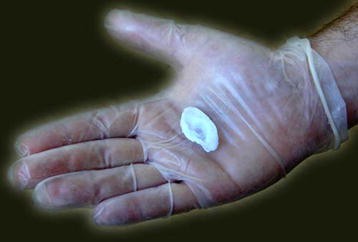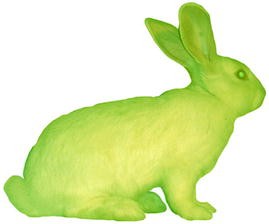Week 6: BioTech + Art
This week's exploration into the fusion of biotechnology and art has profoundly shifted my understanding of both fields. As we delved into this subject, I was particularly captivated by the artistic experiment known as "Blood Wars," a project where the immune responses of different individuals are visualized as a competitive spectacle. This not only blurs the lines between scientific inquiry and artistic expression but also challenges our conventional perceptions of life and individuality.

Red blood cells. Walrus. “In the Wars.” The Walrus and the Honey Bee, 2 Feb. 2023, thewalrusandthehoneybee.com/in-the-wars/.
The ethical considerations around bioart are vast and complex. Articles by thinkers like Ellen K. Levy have highlighted the philosophical questions that arise when life itself becomes a canvas or a medium. For instance, if we can manipulate the genetic fabric of living organisms, what responsibilities do we hold towards these creations? Are these acts of creation, modification, or something entirely new (Levy)? The debates around intellectual property rights, such as those discussed in relation to biotechnological patents, further complicate these questions, underscoring the need for a nuanced understanding of both biology and copyright laws (Sherkow et al.).

Vaage, Nora S. “What Ethics for Bioart? - Nanoethics.” SpringerLink, Springer Netherlands, 3 Mar. 2016, link.springer.com/article/10.1007/s11569-016-0253-6.
Furthermore, the concept of modifying organisms for aesthetic purposes, as seen in Eduardo Kac’s glowing rabbit, introduces a paradox. If society accepts the consumption of animals for sustenance, where should we draw the line when it comes to genetic modification for art (Eduardo)? This leads to broader discussions about the role of biotechnology in potentially reducing natural suffering. Could we, and should we, use our capabilities to create a more harmonious natural world, or does this represent an overreach into the domain of nature (“The Blessing and Curse of Biotechnology: A Primer on Biosafety and Biosecurity”)?

Prince, Matthew. “How Scientists Created the Glow-in-the-Dark Rabbit.” Medium, Beyond Pen and Paper, 17 Nov. 2021, medium.com/beyond-pen-and-paper/how-scientists-created-the-glow-in-the-dark-rabbit-5d0d710bd9e4.
Throughout this week, these inquiries have not only expanded my understanding of what constitutes art and science but also deepened my appreciation for the ethical landscapes we must navigate as these fields converge. As we continue to push the boundaries of what is possible, these discussions will become increasingly vital to guiding responsible and thoughtful innovation (Vesna).
Works Cited:
- Kac, Eduardo. GFP BUNNY, www.ekac.org/gfpbunny.html#gfpbunnyanchor.
- Levy, Ellen K. “Defining Life: Artists Challenge Conventional Classification.” DESMA 9, UCLA, cole2.uconline.edu/courses/1669262/pages/unit-6-agenda?module_item_id=76758681.
- Sherkow, JS; Greely. “The History of Patenting Genetic Material.” Annual Review of Genetics, U.S. National Library of Medicine, pubmed.ncbi.nlm.nih.gov/26442843/. Accessed 10 May 2024.
- “The Blessing and Curse of Biotechnology: A Primer on Biosafety and Biosecurity.” Carnegie Endowment for International Peace, carnegieendowment.org/research/2020/11/the-blessing-and-curse-of-biotechnology-a-primer-on-biosafety-and-biosecurity?lang=en¢er=global. Accessed 10 May 2024.
- Vesna, Victoria. “5 Bioart pt1 1280x720.” YouTube, 18 Sept. 2013, youtu.be/PaThVnA1kyg.
Image Citations:
- Prince, Matthew. “How Scientists Created the Glow-in-the-Dark Rabbit.” Medium, Beyond Pen and Paper, 17 Nov. 2021, medium.com/beyond-pen-and-paper/how-scientists-created-the-glow-in-the-dark-rabbit-5d0d710bd9e4.
- Vaage, Nora S. “What Ethics for Bioart? - Nanoethics.” SpringerLink, Springer Netherlands, 3 Mar. 2016, link.springer.com/article/10.1007/s11569-016-0253-6.
- Walrus. “In the Wars.” The Walrus and the Honey Bee, 2 Feb. 2023, thewalrusandthehoneybee.com/in-the-wars/.
Hi Sophie! I really enjoyed reading your blog post this week! As someone prefers STEM and had very little interest in art in the past years, it was interesting to read about how biotech and art can be integrated. Something that really struck me in your post was how you mentioned Eduardo Kac's glowing rabbit and asked where we should draw the line when it comes to biotechnology with art. When involving animals, ethics has always been a topic of conversation, whether it be in research or food. It's interesting to see how this also plays a role in the arts as well.
ReplyDeleteHi Sophie Reading your blog entry this week was a true pleasure! Reading about the potential for biotech and art integration interested me as someone who has always preferred STEM and has not been particularly interested in art. Your remark touched me particularly when you brought up Eduardo Kac's illuminated bunny and questioned where we should draw the line between biotechnology and art. Ethics have always been a hot issue when it comes to animal use in food or research. Seeing how this affects the arts as well is fascinating.
ReplyDelete